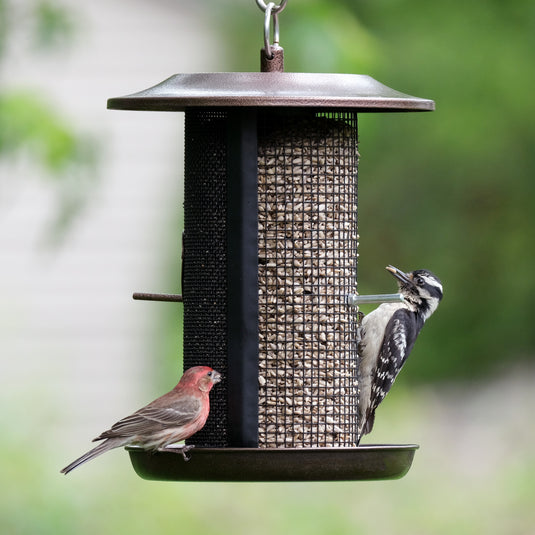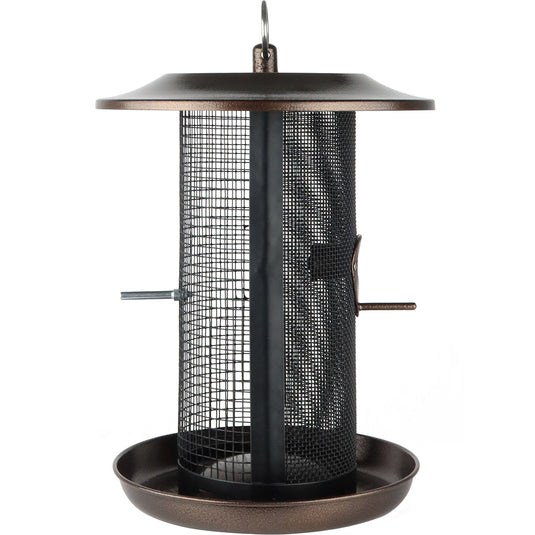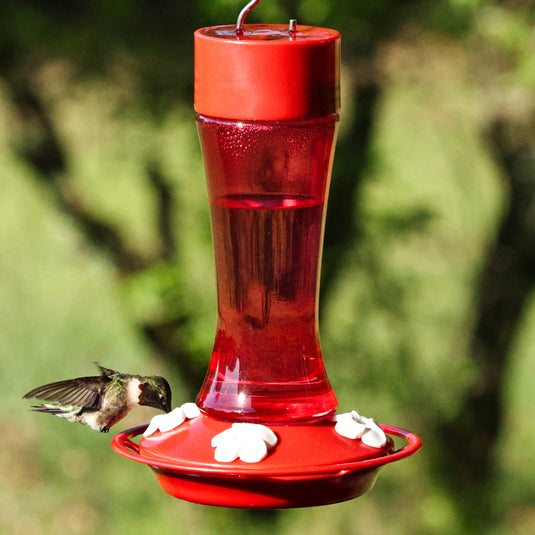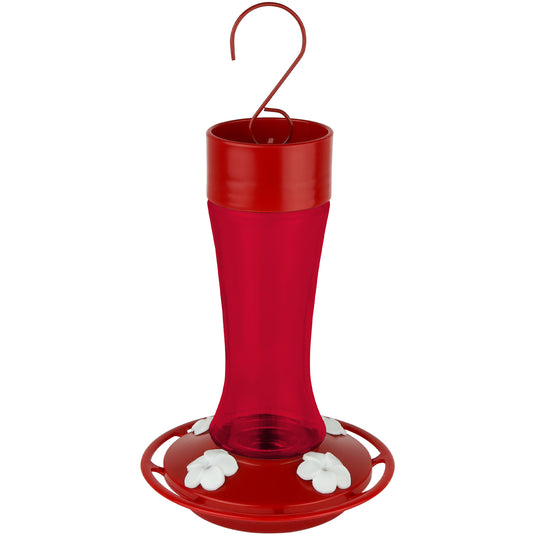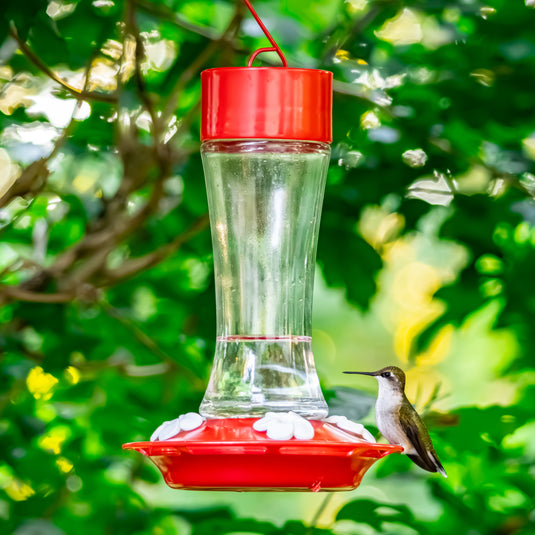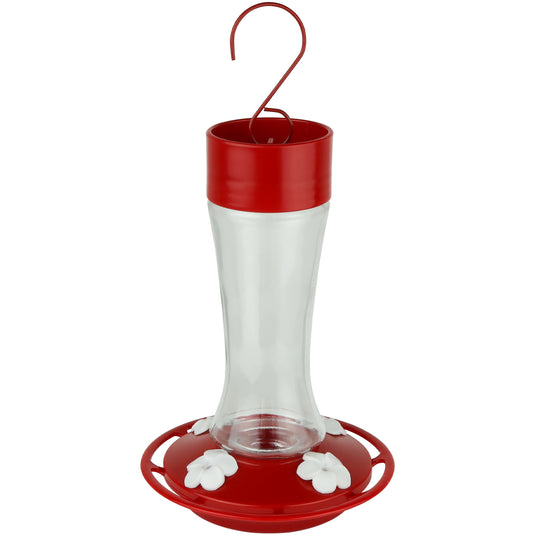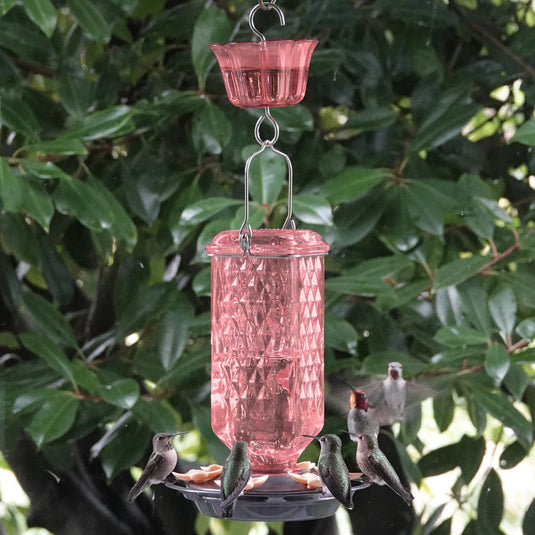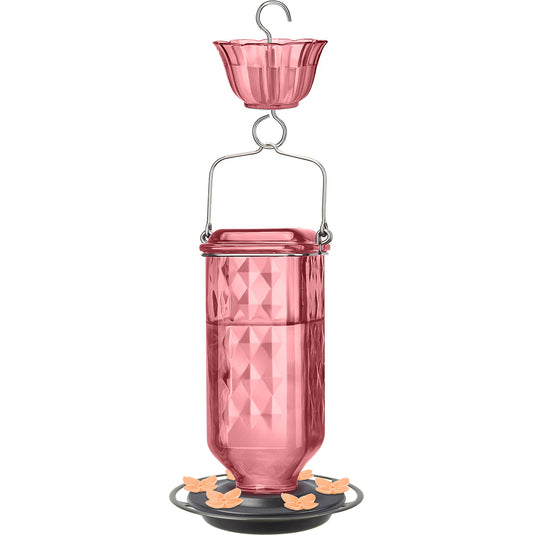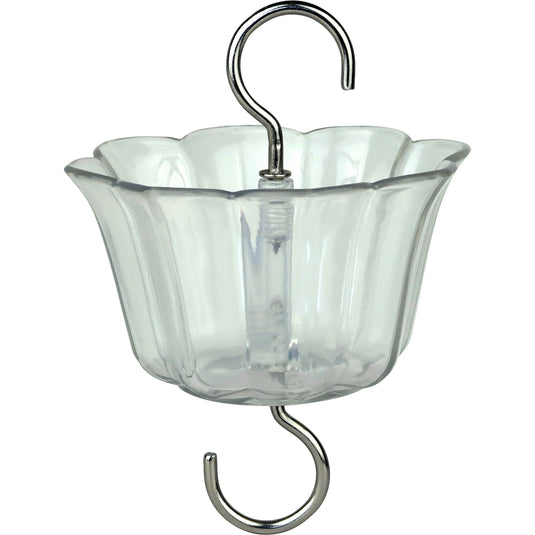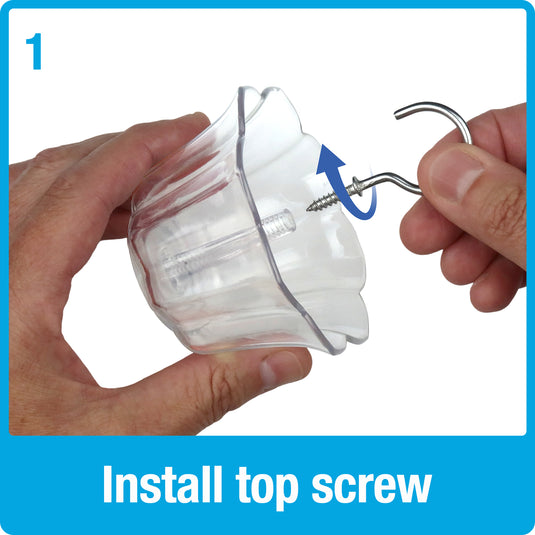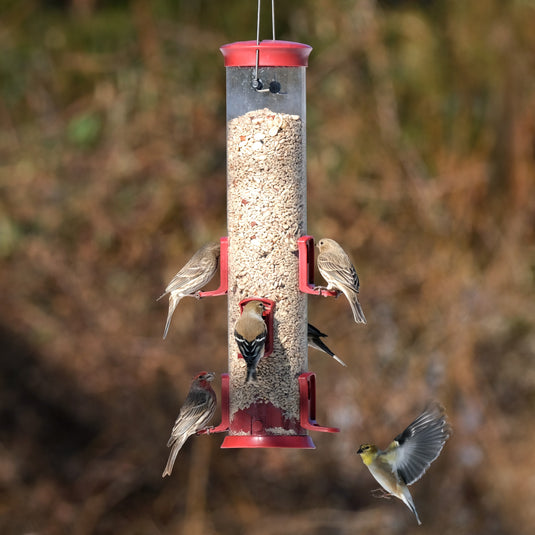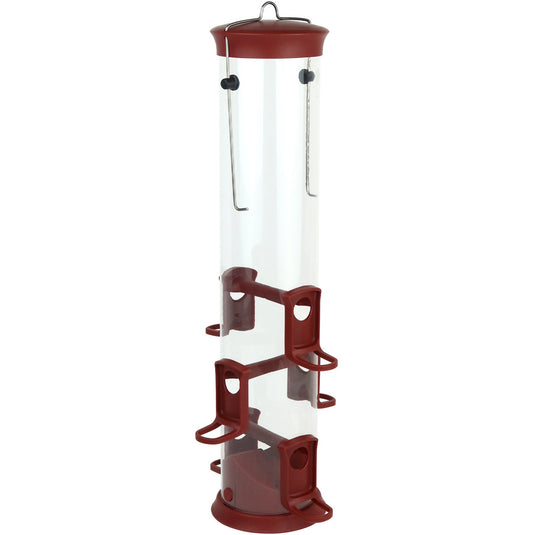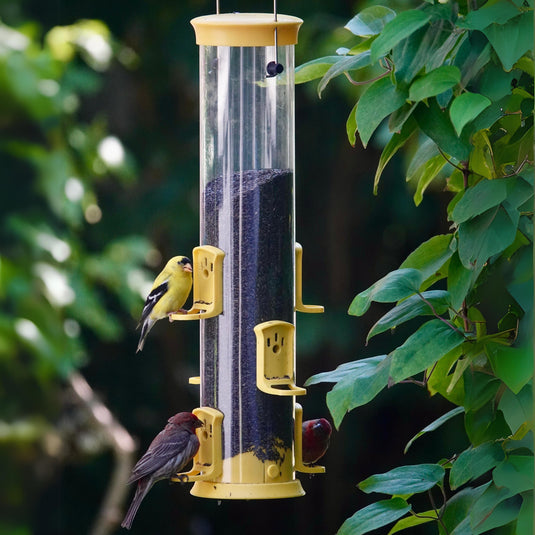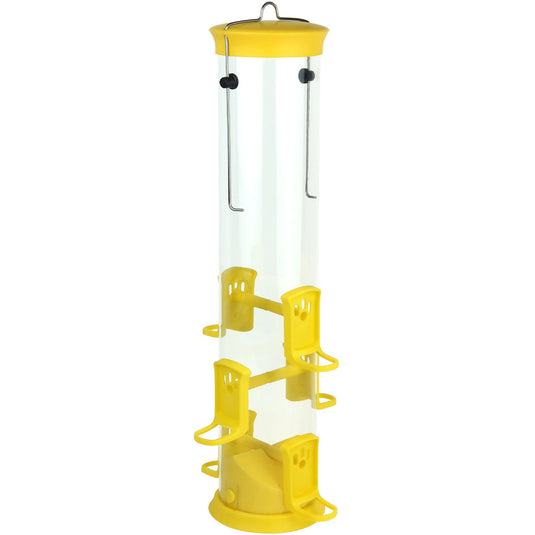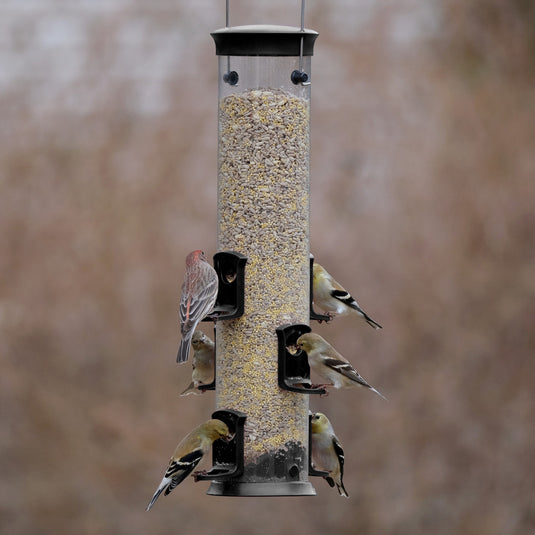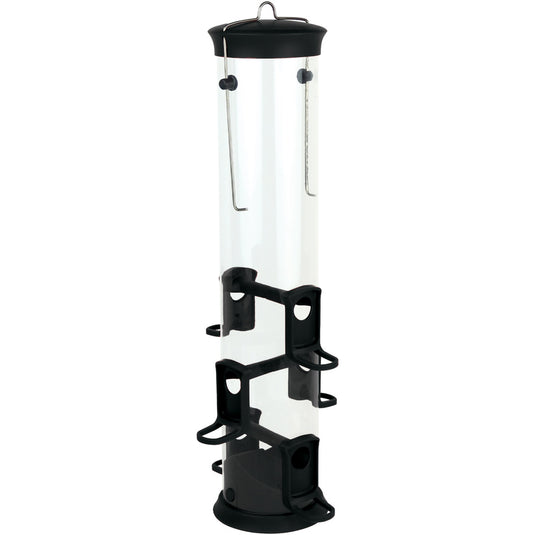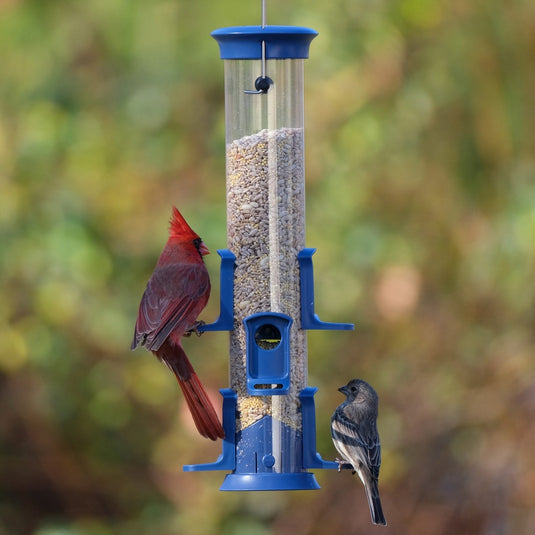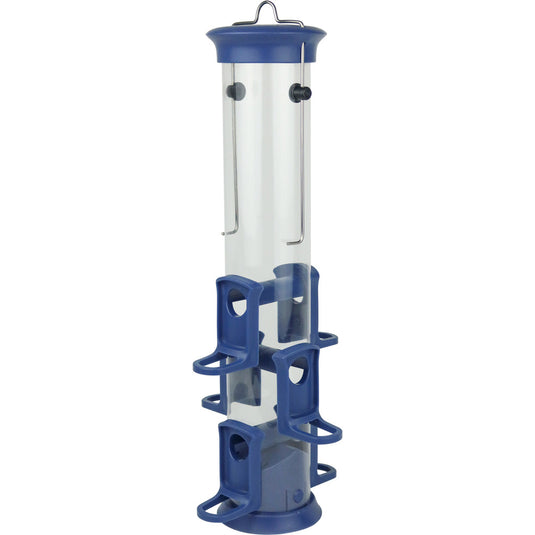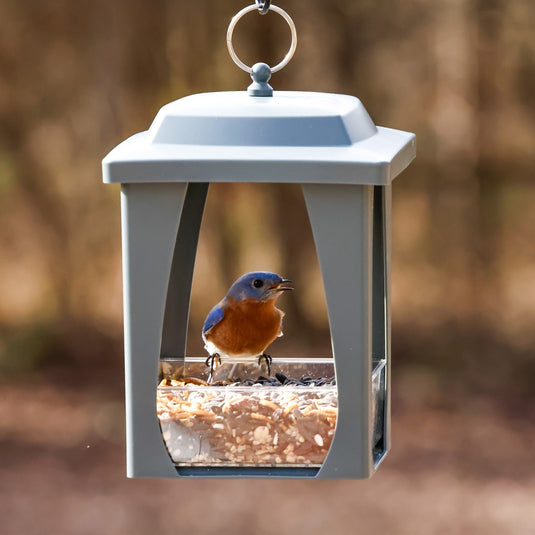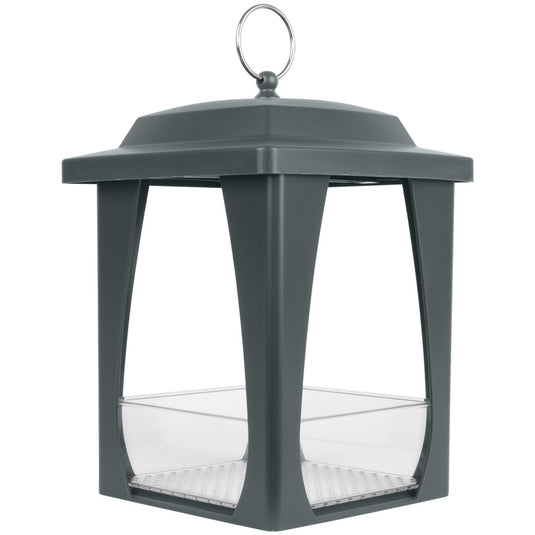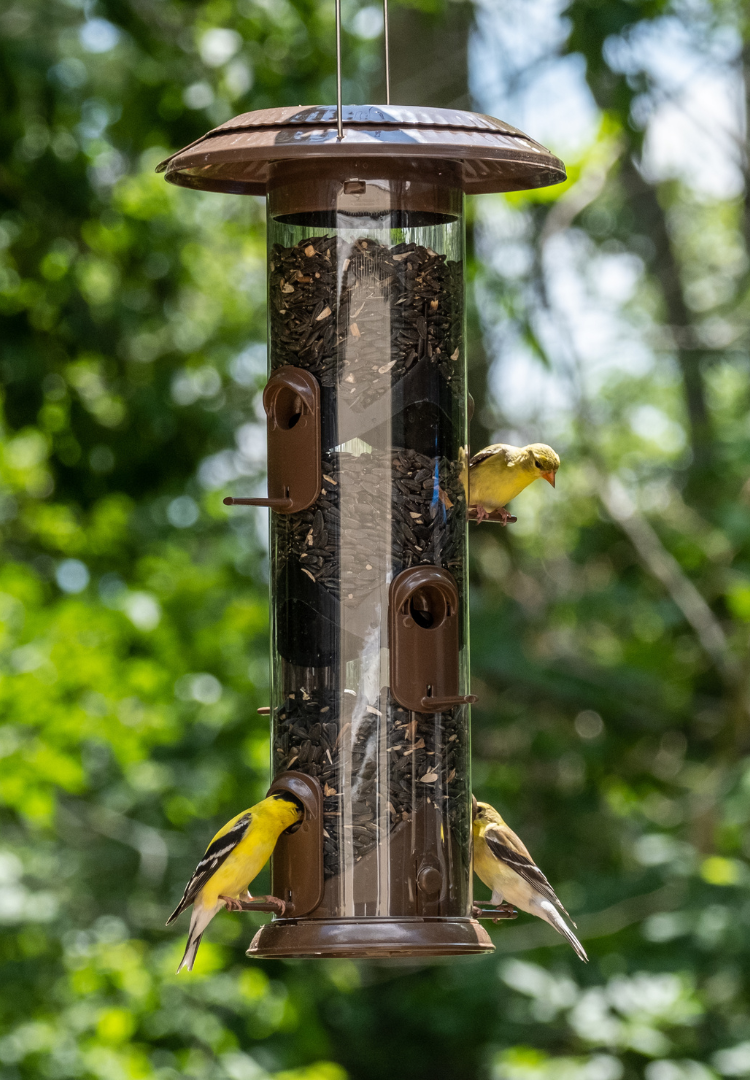With their brilliantly colored feathers and captivating flight patterns, hummingbirds are arguably the most coveted wild bird in North America. Even the briefest hummingbird visits bring joy and delight to backyard birders everywhere! So how can you turn your backyard into a hummingbird haven? With just a few supplies and our simple tips and tricks, you’ll be ready to host a horde of hummingbirds this season!

Put up a hummingbird feeder
One of the simplest ways to attract hummingbirds to your yard is to put up a hummingbird feeder filled with fresh homemade nectar. Surprisingly, hummingbirds aren’t too picky when it comes to the type of feeder you use, as long as there is sufficient distance for their tongues to reach the sweet nectar reward inside. You’ll often see information encouraging you to fill your yard with red feeders, red flowers, or even red nectar, but researchers have proven that hummingbirds are attracted to a wide spectrum of colors even beyond human perception! It turns out they care less about the color of the feeder and more about what’s inside. So, choose a beautiful feeder that’s easy for you to fill, clean, and one that brings you joy.
You don’t need to have a backyard to hang a hummingbird feeder. If you live in a building without a yard or balcony, try out a window hummingbird feeder! Hummingbirds have been known to visit feeders at elevation even without plants nearby.
If you’re having trouble with pests like bees or ants at your hummingbird feeder, take a look at our helpful guide that breaks down common hummingbird feeder challenges and solutions.
Make your own homemade hummingbird nectar
The tried-and-true formula for hummingbird food is simple: about one part white granulated sugar to four parts water. This 20% sugar concentration best mirrors the sugar concentration naturally found in flowers preferred by hummingbirds. Also, the natural sugars found in flower nectar are primarily sucrose, like that of white granulated sugar.
Boil the water for approximately two minutes, add the sugar, and stir to dissolve thoroughly. Cover and allow to cool before using or pouring into a clean storage bottle. A large batch of nectar can be made and stored in the refrigerator for up to two weeks. This makes refilling the feeder easy, so you won't mind doing it every few days.
Additional suggestions:
- We do NOT recommend adding red food dye or any artificial coloring to the nectar.
- Make sure to thoroughly clean your feeders before the first use of the season and before each subsequent refill.
- We only recommend using regular white granulated sugar in nectar preparation.
- Do NOT use honey. Honey is comprised primarily of fructose and glucose and therefore hummingbirds digest this much less efficiently. Also, fermentation and mold growth occurs much more rapidly in nectar solutions using honey than those from granulated sugar.
- Do NOT use artificial sweeteners! Remember, these sweeteners contain no calories, which means they provide no energy to the hummingbirds.
Place your feeder in the right location
The location of your bird feeder should make the hummingbirds feel safe and at home. Hummingbirds are likely to feed more comfortably when near natural cover like trees, shrubs, or other vegetation. This provides shelter for them to view their feeding area so they can see any predators while waiting for their turn to feed. To help prevent fatal window collisions, feeders should be hung or mounted closer than 3 feet or farther than 15 feet from a window.
Placing feeders near flower beds or planters may help attract more hummingbirds to your feeder. If you want to try planting specific flowers to attract more hummingbirds to your yard, make sure you choose plants that are native to your area. Consider creating a blooming schedule to make sure your garden has blooming flowers all spring and summer long.
Set up a hummingbird fountain
Being one of the smallest wild birds in North America, hummingbirds will look for shallow, moving water to fly through, bathe, or splash around in. The typical bird bath is often too deep for hummingbirds to comfortably bathe in. Try setting up a shallow bird bath or add a bubbler, dripper, or mister to an existing bird bath to give the hummingbirds the movement and cascading water they prefer.

When do hummingbirds come to feeders?
Most hummingbirds are migratory birds, meaning they leave and return from a specific area seasonally. As they return from migration and end up in their ultimate destination, they will remember the source of their first meals - oftentimes coming back to the same feeders repeatedly. For the best chance of hummingbirds coming to your feeders, it is recommended to have them up and ready about two weeks before they return from their winter migration. Be aware that if you set up a feeder too late in the season, it may cause some hummingbirds to overlook it, but if hummingbirds are already in your area, don’t be afraid to set out a feeder for them to try. Be sure to research the migratory pattern of hummingbirds in your area to determine the right time to have your hummingbird feeder ready.
Like other wild birds, hummingbirds are most likely to come out and visit a feeder around dawn and dusk, or early in the morning and late in the afternoon before sunset. Since hummingbirds have one of the highest metabolic rates of all backyard birds, they need to eat almost constantly to keep their energy up. That means hummingbirds can be seen feeding at various times throughout the day!
How to identify hummingbirds
The type of hummingbirds that will come to your backyard depends solely on your location. Learn more about how to identify, the migratory range, and nesting habits of each of the five most common types of hummingbirds in North America:





Try these hummingbird feeders


